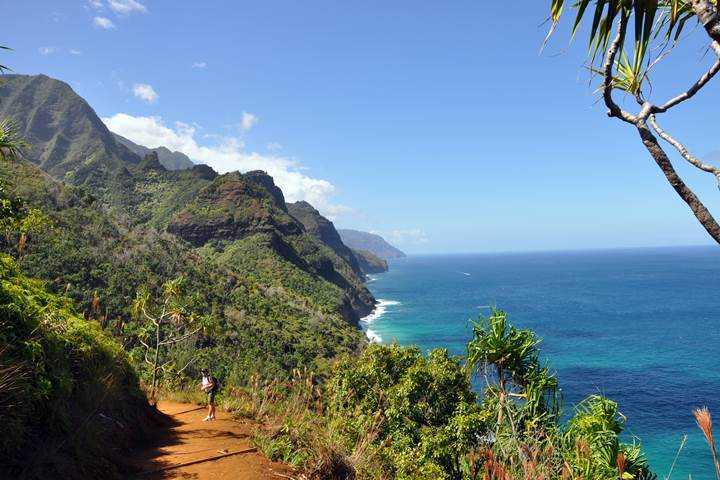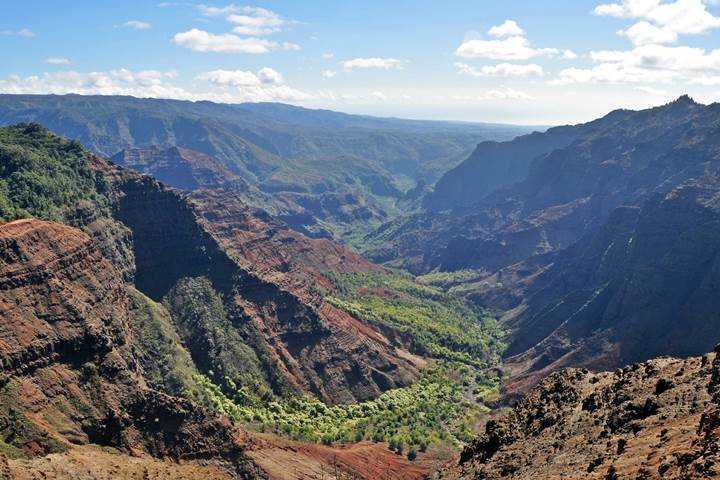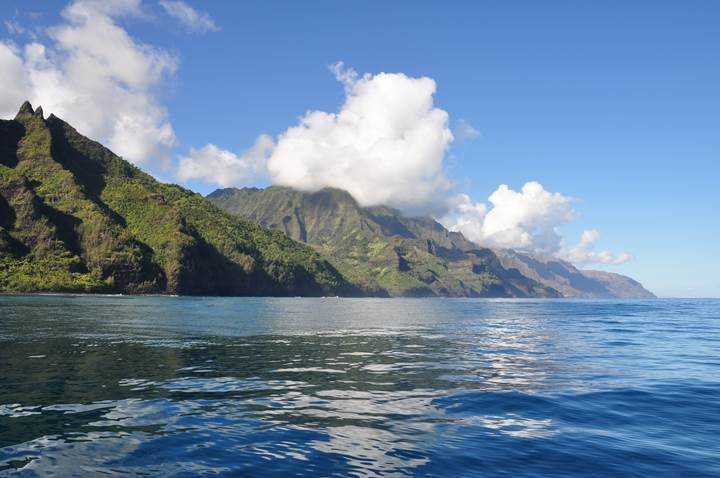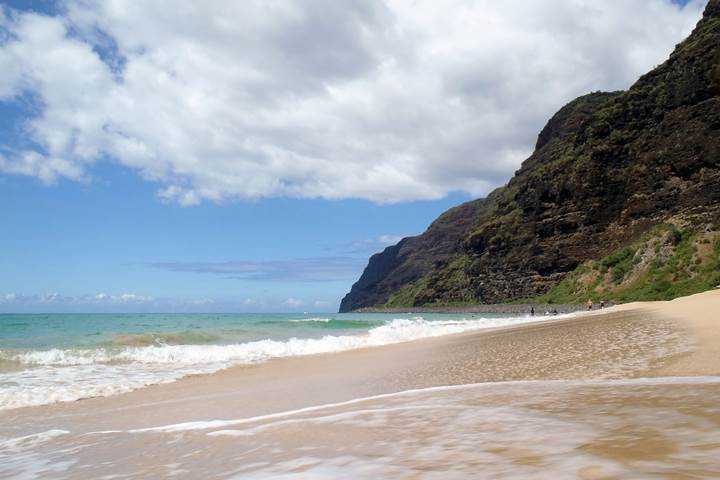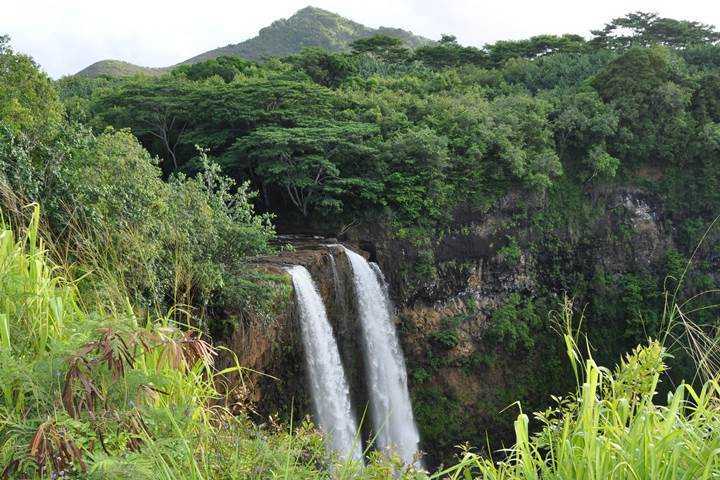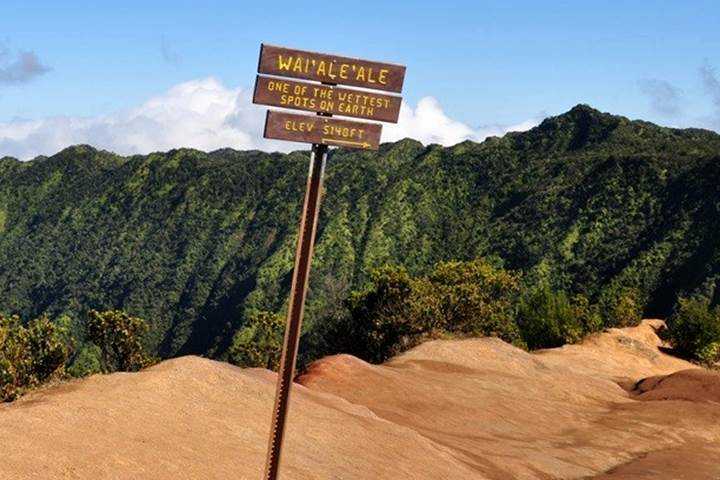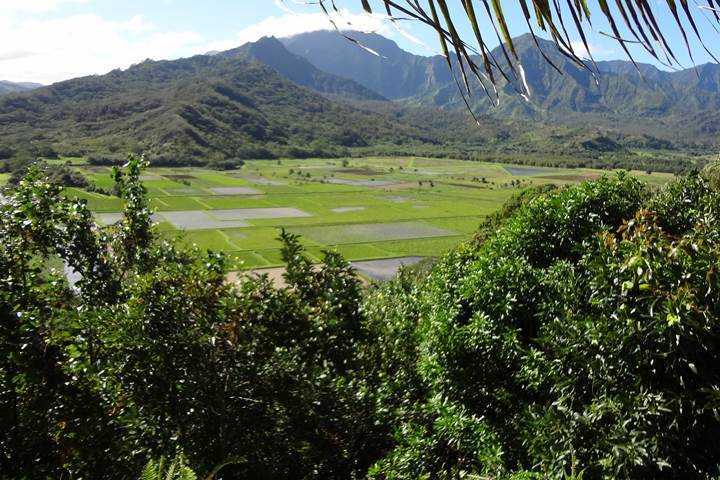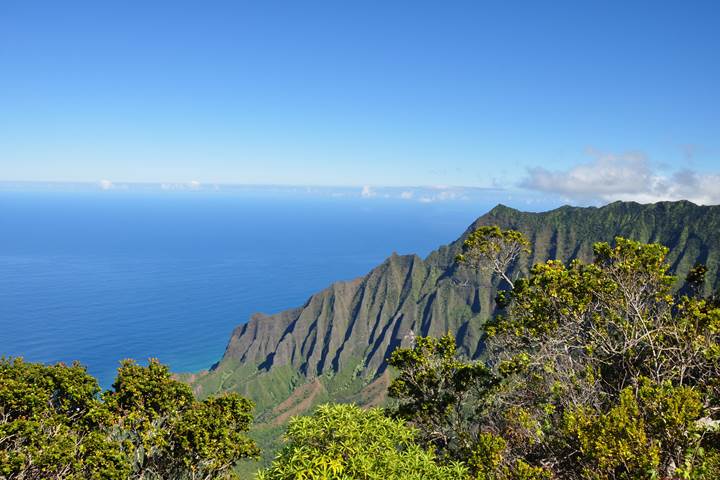Kauai’s beauty has placed this tiny Pacific island many times on the National Geographic Top 50 Places in the World to Live and Play. When you visit Kauai don’t miss Kauai’s Top Ten must see:
By land, sea or air, this is a must do while visiting Kauai. The Napali coast is a fifteen mile coastline starting on the north shore at Kee beach and ending on the west side at Polihale beach. This fifteen mile stretch of coast is inaccessible with sea cliffs rising sharply out of the water to heights of 4,000 feet, hanging valleys, sea caves, lush green valleys and cascading waterfalls from the cliffs above.
The Kalalau Trail provides the only land access to the Napali Coast of Kauai. The trail winds through 5 valleys before ending at Kalalau Beach where it is blocked by steep, sheer cliffs. The 11-mile trail is graded but almost never level as it crosses above towering sea cliffs and through lush valleys. It drops to sea level at the beaches of Hanakapiai and Kalalau. Originally built in the late 1800s, portions of the trail were rebuilt in the 1930s. A similar foot trail linked earlier Hawaiian settlements along the coastline. The trail head is at the end of the road past Haena on the north shore of Kauai.
Kilauea Point National Wildlife Refuge
Kilauea Point National Wildlife Refuge started in 1985 by the U.S. Fish and Wildlife Service, is marked by its towering lighthouse. The ocean cliffs and open grassy slopes of a dormant volcano have provide years of breeding grounds for Hawaiian seabirds. It has become one of a few locations allowing the opportunity to observe many of Kauai’s wildlife such as the Brown Booby, Red-footed Booby, Nowell Shear water, Hawaiian Petre, Great Frigate bird, Laysan Albatross, Wedge-tailed Shear-water and many others. Its coastal front also provides marine protection to Hawaiian monk seals, green turtles, and a few visitors like the humpback whale.
At a mile wide and more than 3,500 feet deep, Waimea Canyon the largest canyon above the Pacific will undoubtedly capture your gaze. The history of Kauai can be seen in the walls and crags of the canyon, a truly remarkable sight offering numerous lookouts and hikes. The Waimea Canyon lies inthe protected Kokee State Park which occupies 4,345 acres of land and has 45 miles of trails that weave through the canyon. Hiking maps can be found at the Kokee Museum.
The Kalalau Lookout at the top of Kokee road in the Kokee State park is a must see lookout of the most beautiful valley along the Napali coast.
The Wailua Falls, one of Kauai’s little secrets, is not only known by its flowing beauty, but also by ease of access. It is one of very few Falls that can be observed by driving. In Kapaia along Maalo road follow route 583 heading north into the interior. Route 583 will lead you through old cane fields with a spectacular mountain backdrops to the 80 foot drop of Wailua Falls. For those old enough to remember the TV series Fantasy Island, Wailua Falls was used in the opening scene.
Mt. Waialeale
Mount Waialeale is the highest peak on Kauai. Waialeale in Hawaiian means “rippling water” or “overflowing water”, peaks at 5,148 feet. Mount Waialelale has received on average 426 inches of rain at the summit and has been considered one of the wettest spots on earth. Don’t let that detour you. It can be raining at the top and sunny everywhere on the entire island. No rain, no waterfalls. Mount Wailaleale can be experienced by one of the many air tours offered or exploring Kauai’s interior by hiking.
Hanalei Valley is one of the most beautiful and lush places in all Hawaii. Hanalei is safe guarded by majestic mountains and splendid cascading waterfalls that drain into the green valley, taro fields, and rivers below. If that doesn’t bring you to your senses then perhaps Hanalei bay with its perfect swimming waves and soft white sand may entice you.
Polihale Beach is the longest stretch of white sand beach in Hawaii. Located at the end of an old dirt cane haul road off the last stretch of highway on the West Side. This is a beautiful beach for long walks, amazing sunsets and camping with the proper permits. Ocean conditions can be dangerous as this is open ocean with no protective reefs and no lifeguard.
Spouting Horn Beach Park is a delightful lookout where you can watch a blowhole spout a plume of sea water into the air. This occurs whenever waves are forced under the lava shelf and up through an opening in the rocky coast. Depending on the tide and ocean conditions, the water may spout as far as 50 feet into the air. If the light is right, you may be able to catch a rainbow in the sea spray.

